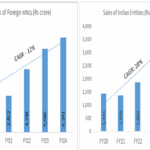Children from the highest mortality countries are up to 60 times more likely to die in the first five years of life than those from the lowest mortality countries, report also says.
NEW YORK/ GENEVA/ WASHINGTON D.C., September 18, 2018 : An estimated 6.3 million children under 15 years of age died in 2017, or 1 every 5 seconds, mostly of preventable causes, according to new mortality estimates released by UNICEF, the World Health Organization (WHO), the United Nations Population Division and the World Bank Group.
The vast majority of these deaths – 5.4 million – occur in the first five years of life, with newborns accounting for around half of the deaths.
“Without urgent action, 56 million children under five will die from now until 2030 – half of them newborns,” said Laurence Chandy, UNICEF Director of Data, Research and Policy. “We have made remarkable progress to save children since 1990, but millions are still dying because of who they are and where they are born. With simple solutions like medicines, clean water, electricity and vaccines, we can change that reality for every child.”
Globally, in 2017, half of all deaths under five years of age took place in sub-Saharan Africa, and another 30 per cent in Southern Asia. In sub-Saharan Africa, 1 in 13 children died before their fifth birthday. In high-income countries, that number was 1 in 185.
“Millions of babies and children should not still be dying every year from lack of access to water, sanitation, proper nutrition or basic health services,” said Dr. Princess Nono Simelela, Assistant Director-General for Family, Women and Children’s Health at WHO. “We must prioritize providing universal access to quality health services for every child, particularly around the time of birth and through the early years, to give them the best possible chance to survive and thrive.”
Most children under 5 die due to preventable or treatable causes such as complications during birth, pneumonia, diarrhea, neonatal sepsis and malaria. By comparison, among children between 5 and 14 years of age, injuries become a more prominent cause of death, especially from drowning and road traffic. Within this age group, regional differences also exist, with the risk of dying for a child from sub-Saharan Africa 15 times higher than in Europe.
“More than six million children dying before their fifteenth birthday is a cost we simply can’t afford,” said Timothy Evans, Senior Director and Head of the Health, Nutrition and Population Global Practice at the World Bank Group. “Ending preventable deaths and investing in the health of young people is a basic foundation for building countries’ human capital, which will drive their future growth and prosperity.”
For children everywhere, the most risky period of life is the first month. In 2017, 2.5 million newborns died in their first month. A baby born in sub-Saharan Africa or in Southern Asia was nine times more likely to die in the first month than a baby born in a high-income country. And progress towards saving newborns has been slower than for other children under five years of age since 1990.
Even within countries, disparities persist. Under-five mortality rates among children in rural areas are, on average, 50 per cent higher than among children in urban areas. In addition, those born to uneducated mothers are more than twice as likely to die before turning five than those born to mothers with a secondary or higher education.
Despite these challenges, fewer children are dying each year worldwide. The number of children dying under five has fallen dramatically from 12.6 million in 1990 to 5.4 million in 2017. The number of deaths in older children aged between 5 to 14 years dropped from 1.7 million to under a million in the same period.
“This new report highlights the remarkable progress since 1990 in reducing mortality among children and young adolescents,” said UN Under-Secretary-General for Economic and Social Affairs Liu Zhenmin. “Reducing inequality by assisting the most vulnerable newborns, children and mothers is essential for achieving the target of the Sustainable Development Goals on ending preventable childhood deaths and for ensuring that no one is left behind.”







